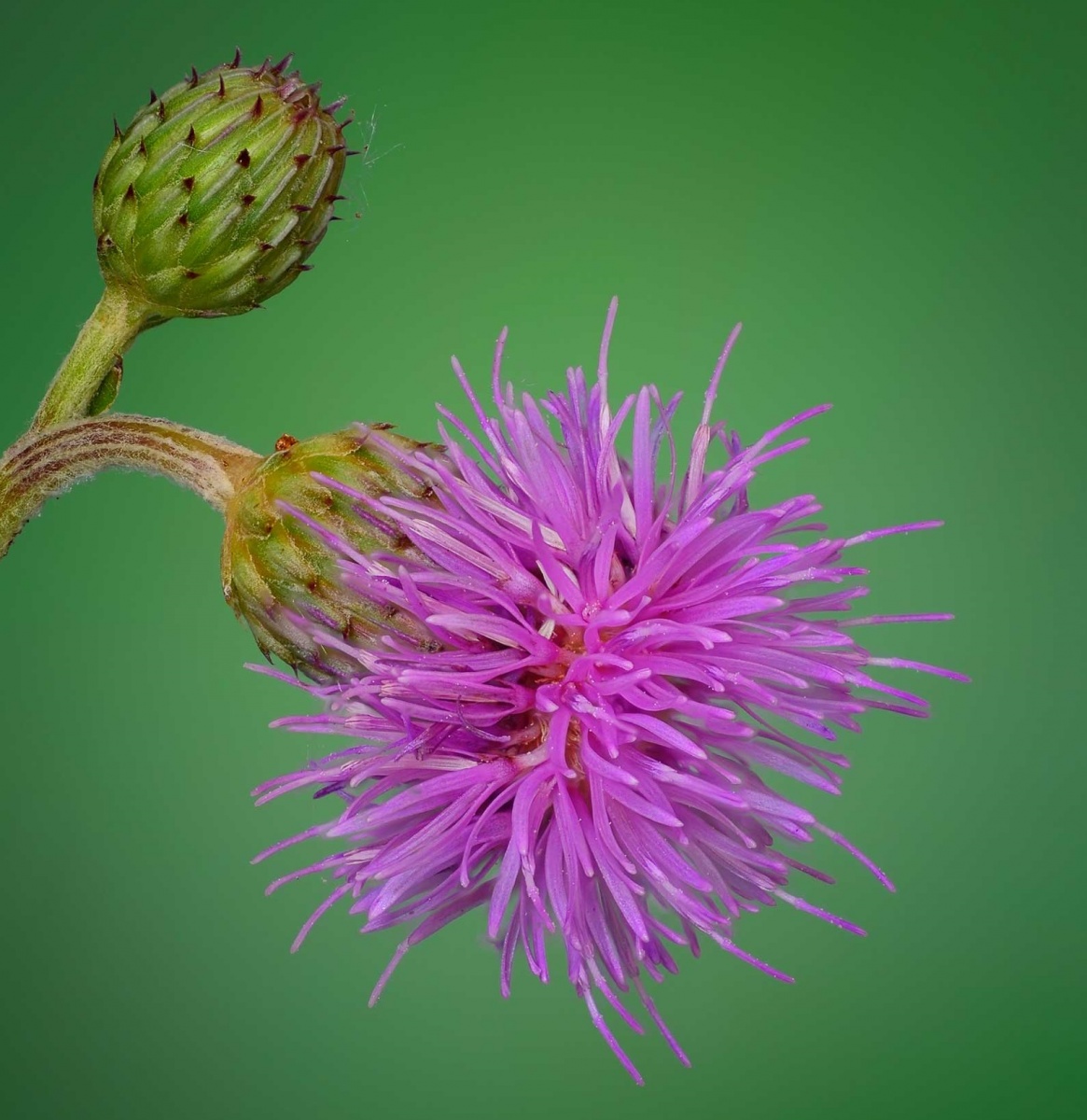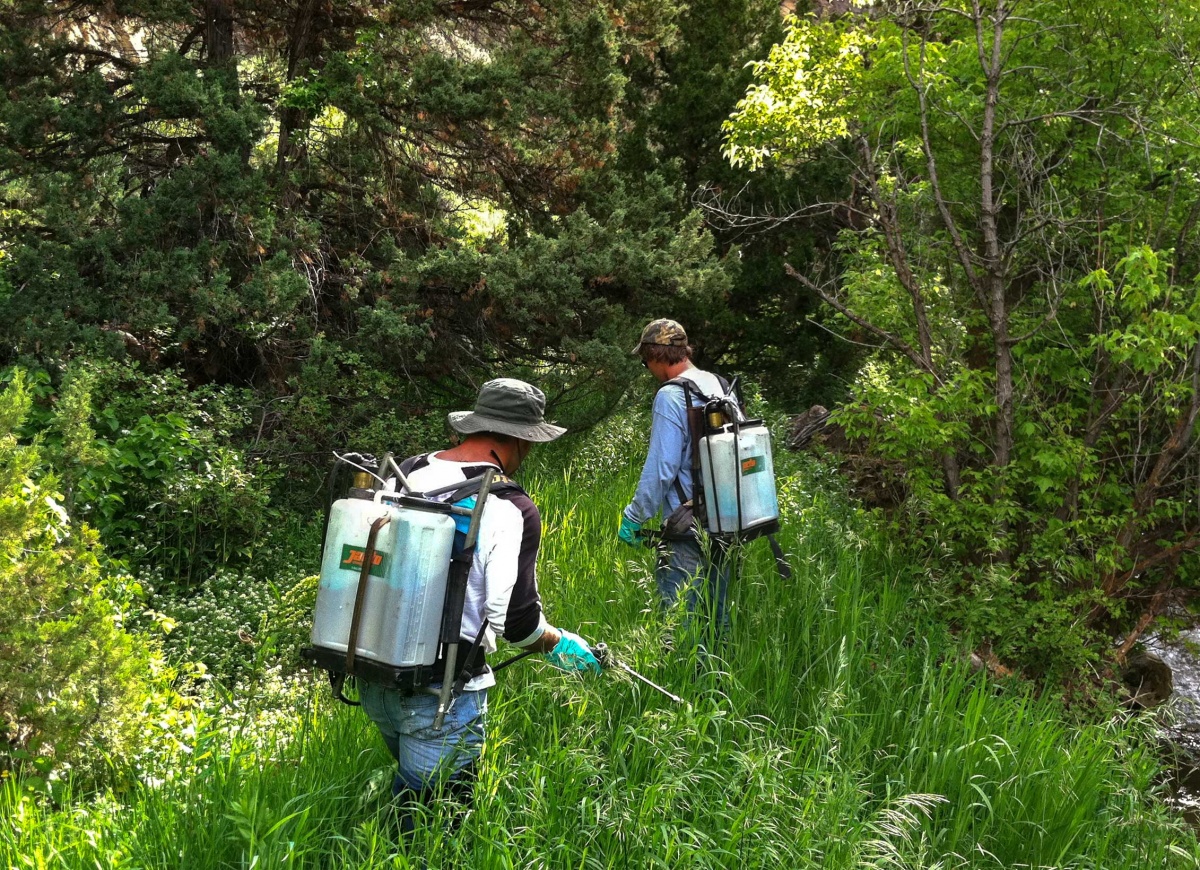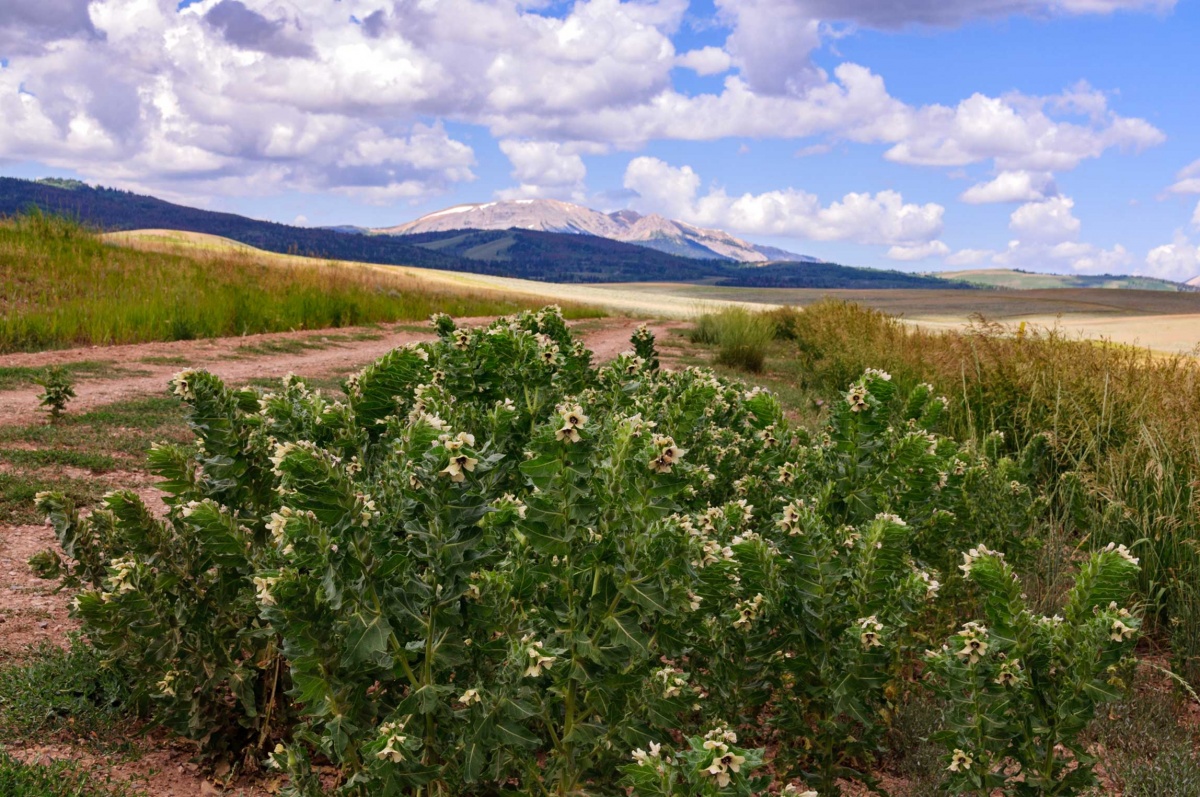
BLM Wyoming Weeds and Invasives Program
Maintaining and restoring land health is one of Wyoming’s highest priorities. Among the many obstacles to maintaining healthy lands and restoring impaired ecosystems are noxious and invasive weeds. These plants alter the native plant composition and productivity which, in turn, jeopardizes the myriad of activities and uses that occur on public lands. The successful implementation of the integrated weed management program in Wyoming relies heavily on our working relationship with county weed and pest districts and other cooperators.
To address the invasive plant management, field offices have established cooperative agreements with the county weed and pest districts for inventory, control, and monitoring activities. An integrated approach to invasive plant control is accomplished by using a variety of treatment methods: selective herbicides; physical removal; and biological control, using insects. The BLM also works with closely with state, federal and local partners with an emphasis on early detection of and rapid response to new invasions in order to reduce the need for larger and more expensive treatments. As a partner in over 25 cooperative weed management areas, the BLM provides a vital leadership role in providing technical expertise and other required resources to address specific weed issues that can affect important wildlife habitat, grazing allotments, and recreational areas.
Although all invasive plants impact public lands, downy brome grass or cheatgrass, is especially problematic due to its tendency to impact vast acreages and significantly alter native plant composition. When dry, it provides the opportunity for wildfire spread that is difficult to control. Being adapted to recover faster after fire than native plants causes a pattern of more frequent fires. This continual cycle of fire and recovery eventually results in the conversion of a native plant community to a monoculture of cheatgrass.
To effectively address this concern, Wyoming BLM is building a stronger capacity to evaluate land health and more effectively determine habitats at high risk for cheatgrass establishment. Equipped with a sound management strategy, cheatgrass control efforts will be risk based on a landscape scale. To effectively implement a landscape scale effort, the BLM has partnered with the Wyoming Game and Fish, County Weed and Pest Districts, other agencies, and private landowners.
Project Story

Partnerships Key to Success
If not eradicated or controlled, invasive weeds will continue to jeopardize the health of public lands and constrain the many activities that occur on public lands. It’s a big job and the BLM can’t do it alone. The more people fighting invasive weeds the better, so BLM Wyoming has united with state, federal and local partners to reduce the spread of weeds. Emphasis will be placed on early detection of, and rapid response to, new invasions in order to reduce the need for larger, more expensive treatments later on.
For many years in the Bighorn Basin, the BLM has maintained assistance agreements with Big Horn, Hot Springs, Park and Washakie counties. The BLM provides funding so that the county weed and pest (W&P) districts can perform weed control work on public lands. The approach works well because, within a particular area, W&P can treat weeds continuously without starting and stopping as land ownership changes.
Coordinated Resource Management groups (CRMs) have also taken up the fight. CRMs in the Bighorn Basin are made up of private landowners and state and federal agencies who actively work together toward a common goal: the eradication of Russian olive, salt cedar and other noxious weeds, while restoring native vegetation for wildlife and livestock and improving water quality. These special partnerships receive funding from federal and state grants. Bighorn Basin CRMs include Shell Valley CRM in Big Horn County, Kirby Creek CRM in Hot Springs County and Cottonwood Creek CRM in Washakie and Hot Springs counties.
The BLM has also partnered with the PlayCleanGo, a national initiative to educate the public of all invasive species that pose a threat to ecosystem health. PlayCleanGo is a call to action to become aware and be accountable for helping stop the spread of invasive species.
One of the BLM's highest priorities is to promote ecosystem health. Prevention, control and eventual eradication of invasive plants with partners like county weed and pest agencies and private landowners is key to reaching this goal.
Story by Ken Henke, Natural Resource Specialist, Wyoming State Office

